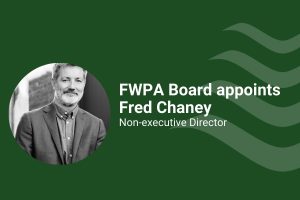FWPA has continued its important work to educate the construction industry and consumers about building safely with timber in bushfire-prone areas. Most recently, Boris Iskra, National Codes & Standards Manager, gave a presentation to more than 200 builders, architects and designers, local government officers and urban planners in the Blue Mountains.
Mr Iskra’s presentation was the latest of many given by FWPA on the topic of building with fire in mind, focusing on the relevant building standards and how timber can be used compliantly.
Requirements for building with wood in bushfire-prone areas are determined based on the relevant Bushfire Attack Level (BAL), which measures the severity of a building’s potential exposure to ember attack, radiant heat and direct flame contact. BALs take into consideration the type of vegetation surrounding a building, the distance between the vegetation and the building, and various other factors including the slope of the ground.
Mr Iskra said there are appropriate uses for timber across the entire spectrum of BALs.
“The fact is people want to live in these areas and they also want to build with wood. The problem is that Australia’s native forests need to burn in order to regenerate, so there will always be a risk of fire,” said Mr Iskra.
“Of course, there are no guarantees that a building will survive a bushfire regardless of the materials used in its construction. What we can do is build using the materials and methods we know will best protect the structure and its occupants. It’s all about what’s used, how it’s used and what it’s used in conjunction with.
“We all know timber will burn in a fire event. This knowledge is helpful because it allows us to predict exactly how timber will perform in specific circumstances. We can therefore design using timber properties to help meet the performance requirements of the structure,” Mr Iskra explained.
Cost-effective and sustainable timber framing can be used in all areas, regardless of BAL. Likewise, for internal joinery applications including doors, wall lining, ceiling linings, floorboards and staircases, there are no limitations on materials. However, for external applications such as wall cladding, doors, windows or decks, material compliance does depend on the designated BAL.
“When designing a building in a bushfire-prone area, the Australian standard AS 3959 applies, alongside numerous variations at a State level, and within distinct Local Government Areas (LGAs),” said Mr Iskra.
“For anybody considering building with timber in a bushfire-prone area, my advice would be to talk to the LGA in the first instance, to seek advice about the BAL and any other requirements that must be adhered to. This will give a clear picture of what building materials can be used in various applications.”
In addition to the presentations, a wealth of free resources on the topic is available at the WoodSolutions website, which aims to support anybody building in a bushfire-prone area to improve their timber product knowledge and understanding. The resources outline wood choices, fire safety provisions and regulations for timber construction and design.
These materials include the comprehensive technical design guide, Guide 4: Building with Timber in bushfire-prone areas, offering guidance on the appropriate use of timber solutions under the various BALs. Also available is an online calculator with the ability to estimate BALs Australia-wide.
Further information and materials are available on the WoodSolutions website.



